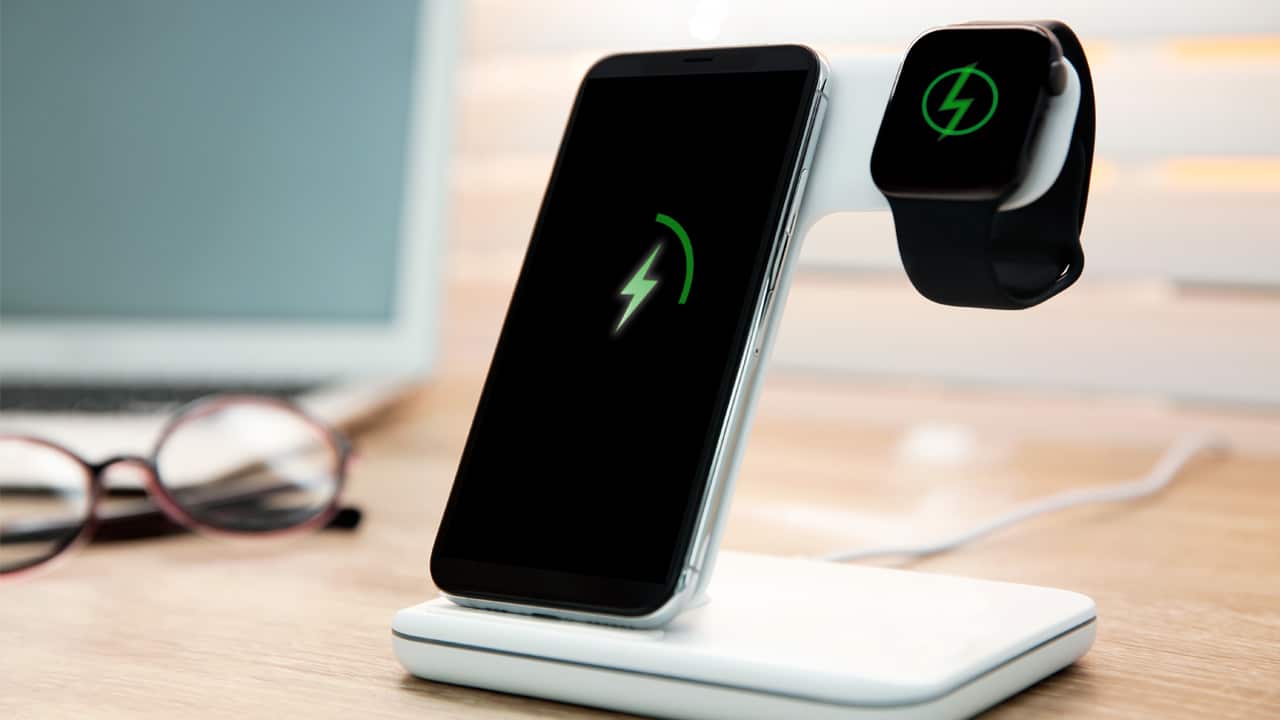The potential of truly wire-free power is exciting, but tangible products remain elusive.
IMAGINE IF THE smartphone in your pocket, gamepad in your hand, or watch on your wrist could charge wirelessly. No cables, no wireless charging pads. Just wireless power beamed through the air by a router, much like Wi-Fi. The potential benefits for medical devices, sensors, cameras, and a host of other battery-powered gadgets are easy to grasp. Wires and cables are awkward, and batteries are expensive to produce and difficult to recycle.
I first saw wireless power, also known as distance wireless charging, in action seven years ago and was amazed. A small transmitter panel wirelessly powered a light bulb up to 30 feet away across the room. Since then, I’ve seen similar technology powering everything from E Ink displays to earbuds and smartphones. But working prototypes and reference products are one thing. It’s been more than a century since Nikola Tesla proved wireless power over distance was possible, wowing crowds by demonstrating a large transmitter coil powering distant incandescent electric lamps. Implementing that technology in consumer products we can buy is a whole different ball game.
After taking a backseat for years, the technology made a bit of a resurgence in 2021 and at the CES 2022 technology trade show. There's progress, but you still shouldn't expect distance wireless charging in many of your household goods anytime soon.
Last year, Motorola showed off a smartphone charging wirelessly up to 10 feet away from a transmitter and four smartphones charging simultaneously at closer range. Xiaomi and Oppo teased similar technologies. This year, Samsung’s Eco TV Remote made our Best of CES 2022 short list. Its predecessor relied on solar energy, but the new model adds radio-frequency (RF) harvesting. It grabs the radio waves bouncing around your home, emitted by devices like your Wi-Fi router, and converts them to energy.
Developed by Samsung’s research and development division, this technology was refined by the TV group as a part of a companywide drive to be more environmentally friendly. Instead of a battery inside the remote, there’s a super-capacitor that charges up to 80 percent capacity in just 10 minutes by combining solar and RF harvesting.
This innovation is clever and exciting, but it works only for small devices that don’t require much power. That’s why many players in this space target gadgets like E Ink displays for supermarket shelves, wearables, and internet-of-things (IoT) sensors. Most devices need considerably more power than a TV remote, making a dedicated transmitter (that's not your Wi-Fi router) essential.
“The key behind our Cota wireless power technology is that we can power devices at distance, control the power, and prioritize which devices get it, but we can also power devices in motion,” says Hatem Zeine, founder, president, and chief technology officer at Ossia, one of the most prominent names in distance wireless charging.
Ossia announced a partnership with tablet maker Archos at CES 2022, showing off concepts for distance charging a smartwatch, camera, and SOS button to help care for the elderly. The idea is that wireless power can keep these monitoring devices charged to track the wearer 24/7. Ossia also unveiled the Cota table, powered wirelessly by a Cota panel on the ceiling, with Qi wireless charging pads and a battery inside (it can also host USB ports). The table is aimed at cafés and venues where running cables is tricky and the flexibility to change seating setups is prized.
Full article on





Leave a comment
This site is protected by hCaptcha and the hCaptcha Privacy Policy and Terms of Service apply.